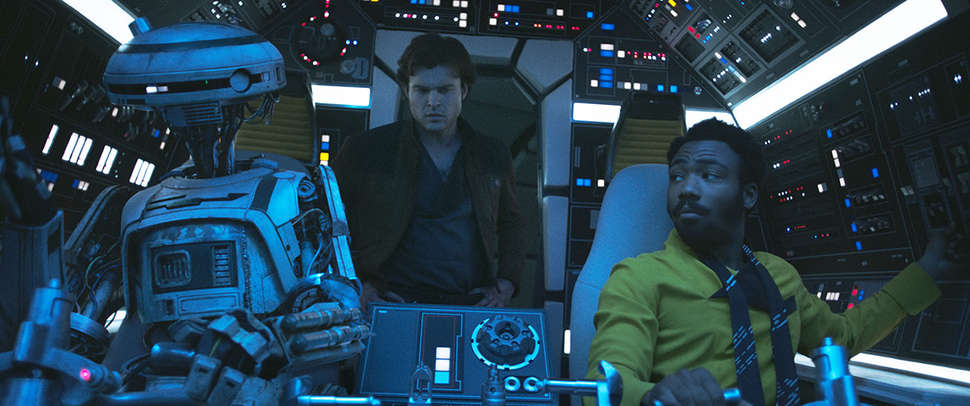Via Thrillest.com:
In this age of superhero and space-adventure blockbusters, you might think that most of the aliens and robots appearing in Ron Howard’s Solo were computer-generated. And for good reason; CG characters can be made to do anything, and can accommodate last-minute design changes. But savvy audiences have in recent times lamented the unfettered rise of CG, and yearned for the “old-school” days of practical effects.
Which is why the filmmakers behind Solo were determined to do something a little different. They combined the best of both worlds for several of the characters by capturing an actor’s — or even an acrobat’s — on-set performance, and by puppeteering practical creatures. Visual effects studio Industrial Light & Magic (ILM) and its partner studios would then add to or augment the performance digitally, but only where required.
Three of these hybrid creations in Solo were L3-37, Lando’s very close droid co-pilot; the four-limbed alien creature Rio Durant; and gang leader Lady Proxima. Thrillist asked Solo visual effects supervisor Rob Bredow how real performances and CG brought these characters to life.
Star Wars has done CG droids before; Rogue One featured K2-S0, which was voiced by Alan Tudyk but made completely digitally by ILM. L3-37, on the other hand, was a hybrid. Actress Phoebe Waller-Bridge was the voice of L3 and played the droid in a partial suit on set. She’d wear, say, just a head-piece, or have arm, chest, hip, and leg robot parts, while the rest of her body was covered in a green-screen stocking.
“We’d use that costume wherever we could,” says Bredow, “and then replace the rest with a digital version of L3. It was just very careful paintwork and very careful ‘matchmoving’ work to follow exactly how Phoebe was moving. What you see in the final movie is a real combination between a practical suit and a digital character, and that performance is 100% Phoebe.”
Even L3’s slightly unusual walk came from a practical origin, in that the costume department built Waller-Bridge some tailor-made shoes to make the character taller. “Rather than doing that via tricks with digital animation,” notes Bredow, “we thought, ‘What if we could get Phoebe to do this?’ We built special shoes so that she was actually standing on risers that were rounded on the bottom, and then she developed this walk that we did together.”
Click below to read the full article.

